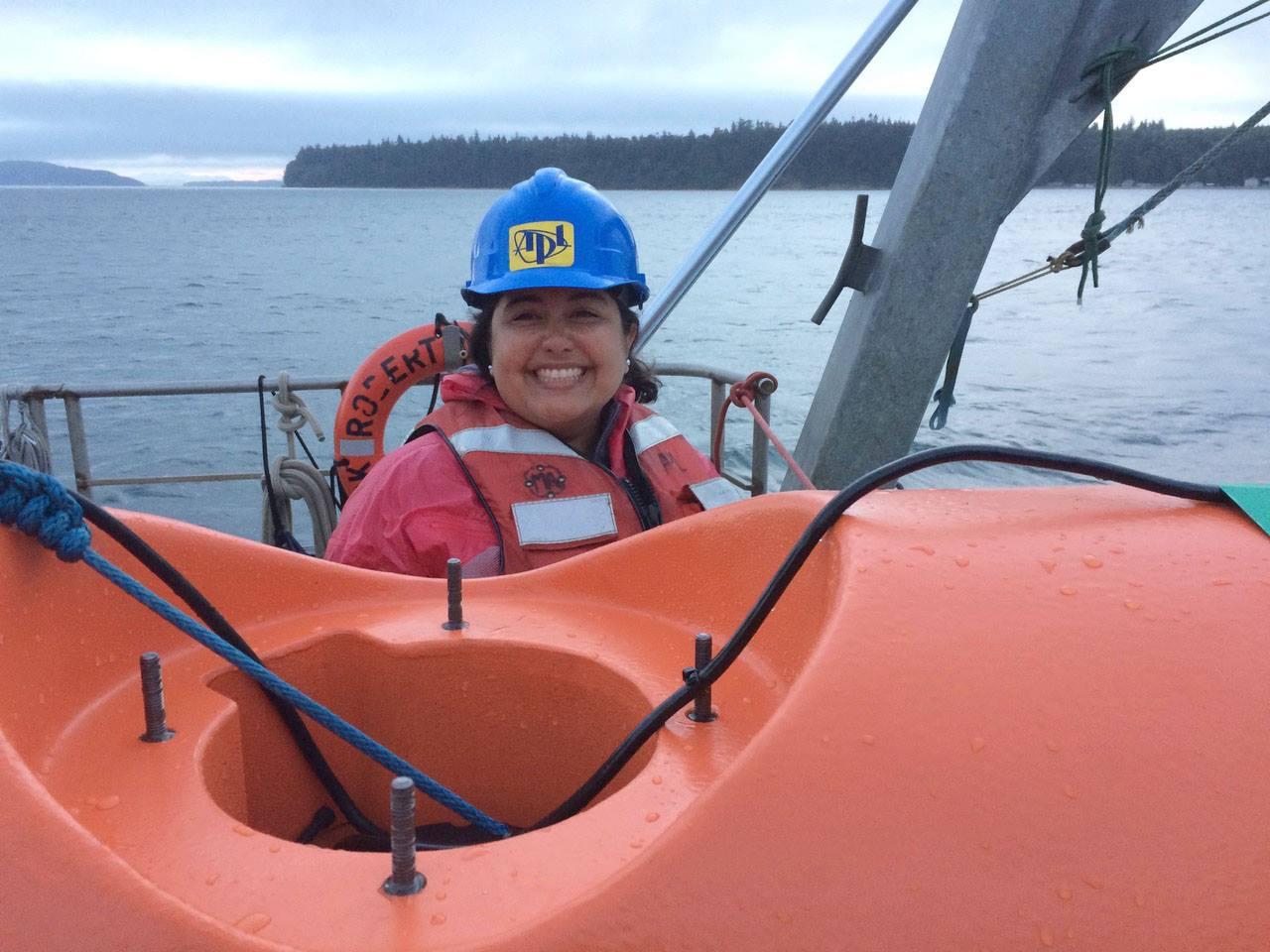OERA-funded projects: Reducing Costs of Tidal Energy through a Comprehensive Characterization of Turbulence in Minas Passage and Multi-Scale Turbulence Measurement in the Aquatron Laboratory
Supporting OERA goal to: Foster research that promotes technical innovation to reduce barriers to development of energy resources.
Hands-on experience with tidal energy in her home country of Chile inspired Maricarmen Guerra Paris to learn more about marine renewable energy.
“In 2010, after finishing my master’s degree, I began working with my thesis supervisor on a proposal for a tidal energy resource assessment project in the south of Chile, the first of its kind in the country,” she says. “After the proposal was successful, I was the lead research engineer for four years on the project. While working and learning about tidal energy in Chile I became more interested in fluid mechanics, and also about studying again, I felt that I needed to know more and that I needed additional tools to do my job, so I decided to get a PhD.”
Maricarmen completed her PhD under the supervision of Dr. Jim Thomson at the University of Washington. She is currently a postdoctoral fellow at Dalhousie’s Oceanography department, under the supervision of that university’s Dr. Alex Hay and Dr. Karsten from Acadia University. “During my PhD I explored and developed methods and techniques to map turbulent flows in time and in space, and I applied those methods to study, in the field, the wake of hydrokinetic turbines,” she says, adding that her current research is focused on turbulence at high-energy sites as it relates to marine renewable energy.
Encouragement and support from her husband and family along with her two master’s thesis supervisors has helped Maricarmen attain what she has achieved in her studies and her career. She says she finds motivation and fulfillment in sharing her knowledge with young people through teaching and outreach activities. She adds, “I enjoy the ocean and nature, and what motivates me is to learn about how the ocean works and how we can interact with it in a sustainable and safe way.”
Of her work as a member of the research team for two OERA-funded projects, Maricarmen says, “For me, it has been exciting to learn how to use new instruments and to test how the different instruments and techniques, that we typically use in the field, work and compare in both controlled environments and energetic tidal channels. This research matters because turbulence measurements are difficult in highly-energetic environments, turbulence varies spatially and in time, and it is not easy to accurately capture its variability.”

